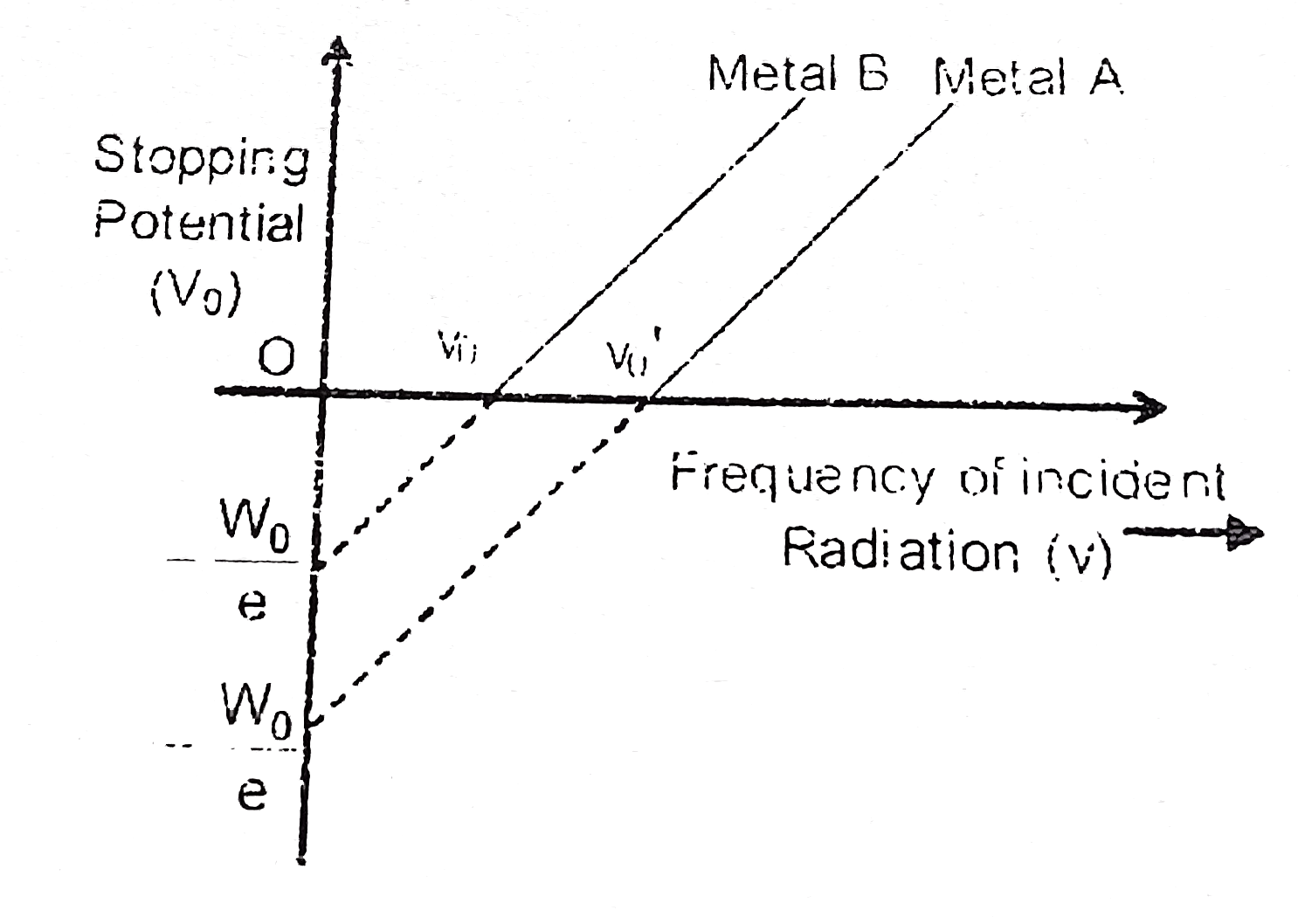Complete Solutions to CHAPTER PRACTICE TEST of chapter DUAL NATURE OF RADIATION AND MATTER of Class 12 book with complete answers and questions
| Class 12 | PHYSICS |
| Chapter | DUAL NATURE OF RADIATION AND MATTER |
| MODERN PUBLICATION | CHAPTER PRACTICE TEST |
| Number Of Questions | 15 |
| Academic Year | 2023-24 |
Define the term 'stopping potential' in relation to photoelectric effect.
View SolutionHow the kinetic energy of ejected electrons depends on the intensity of light ?
View SolutionA proton and an electron have same velocity. Which one has greater de Broglie wavelength and why ?
View SolutionWhat would be the de Broglie wavelength of an electron possessing 100 eV kinetic nergy?
View SolutionFind the momentum of a wavelength `0.03Å` if planck's constant is h.
View Solution(a) Why photoelectric effect cannot be explained on the basis of wave nature of light?
(b) Write the basic features of photon picture of electromagnetic radiation on which Einstein's photoelectric equation is based.
View SolutionThe graph shows variation of stopping potential `V_(0)` versus frequency of incident radiation `v` for two photosensitive metals `A` and `B`. Which of two metals has higher threshold frequency and why?

View SolutionPlot a graph showing variation of de-broglie wavelength `lambda` versus `1//sqrtV`, where V is accelerating potential for two particle A and P carrying same charge but of masses `m_1 and m_2(m_1gtm_2)`. Which one of the two represents a particle of smaller mass and why?
View SolutionA photon and an elecron have the same de Broglie wavelength. Which has greater total energy? Explain
View SolutionShow that the do Broglie wavelength `lamda` of an electron of energy E is given by the relation `lamda = =h/(sqrt2mE)`
View SolutionDefine threshold frequency and work function of a metal. Show that do Broglie wavelength associated with a moving particle is `lamda = h/(mv)` Where the symbols have their usual meanings.
View SolutionLight of intensity I and frequency `nu` is incident on a photosensitive surface and causes photoelectric emission. What will be the effect on anode current when (i) the intensity of light is gradually increased, (ii) the frequency of incident radiation is increased and (iii) the anode potential is increased? In each case, all other factors remains the same. Explain, giving justification in each case.
View SolutionWrite the three characteristic features in photoelectric effect which cannot be explained on the basis of wave theory of light, but can be explained by using Einstein's equation.
View SolutionIn a plot of photoelectric current versus anode potential, how does
(i) the saturation current vary with anode potential for incident radiations of different frequencies but same intensity?
(ii) the stopping potential vary for incident radiations of different intensities but the same frequency?
(iii) Photoelectric current vary of different intensities but same frequency of incident radiation? justify your answer is each case.
View SolutionAn electron microscope uses electrons accelerated by a voltage of `50kV`. Determine the De Broglie wavelength associated with the electrons. If other factors ( such as numerical aperture, etc.) are taken to be roughly the same, how does the resolving power of an electron microscope compare with that of an optical microscope which uses yellow light?
View Solution
CHAPTER PRACTICE TEST questions and complete solutions for chapter DUAL NATURE OF RADIATION AND MATTER of MODERN PUBLISHERS PHYSICS (HINGLISH) of Class 12
All Exercises from MODERN PUBLICATION Class 12 PHYSICS DUAL NATURE OF RADIATION AND MATTER
- CHAPTER PRACTICE TEST
- COMPETITION FILE (OBJECTIVE TYPE QUESTIONS ( A - Multiple Choice Questions))
- COMPETITION FILE (OBJECTIVE TYPE QUESTIONS ( B - Multiple Choice Questions) (AIPMT/NEET & Other State Boards for Medical Entrance))
- COMPETITION FILE (OBJECTIVE TYPE QUESTIONS ( B - Multiple Choice Questions) (JEE (Advanced) for IIT Entrance))
- COMPETITION FILE (OBJECTIVE TYPE QUESTIONS ( B - Multiple Choice Questions) (JEE (Main) & Other State Boards for Engineering entrance))
- COMPETITION FILE (OBJECTIVE TYPE QUESTIONS ( C - Multiple Choice Questions) )
- COMPETITION FILE (OBJECTIVE TYPE QUESTIONS ( D - Multiple Choice Questions) )
- COMPETITION FILE (OBJECTIVE TYPE QUESTIONS (ASSERTION REASON TYPE QUESTIONS))
- COMPETITION FILE (OBJECTIVE TYPE QUESTIONS (INTEGER TYPE QUESTIONS))
- COMPETITION FILE (OBJECTIVE TYPE QUESTIONS (MATCHING TYPE QUESTIONS))
- COMPETITION FILE (OBJECTIVE TYPE QUESTIONS (MATRIX MATCH TYPE QUESTIONS))
- Conceptual Questions
- Higher Order Thinking Skills & Advanced Level (QUESTIONS WITH ANSWERS)
- NCERT FILE (NCERT - Additional Exercises)
- NCERT FILE (Textbook Exercises)
- NCERT FILE (NCERT - Exemplar Problems - Objective Questions (Multiple Choice Questions (Type - I)))
- NCERT FILE (NCERT - Exemplar Problems - Objective Questions (Multiple Choice Questions (Type - II)))
- NCERT FILE (NCERT - Exemplar Problems - Subjective Questions (Short Answer Type Questions))
- NCERT FILE (NCERT - Exemplar Problems - Subjective Questions (Very Short Answer Type Questions))
- PRACTICE PROBLEMS - 1
- PRACTICE PROBLEMS - 2
- PRACTICE PROBLEMS - 3
- Revision Exercises (Additional Questions)
- Revision Exercises (Fill in the Blanks)
- Revision Exercises (Long Answer Questions)
- Revision Exercises (Numerical Problems)
- Revision Exercises (Short Answer Questions)
- Revision Exercises (Very Short Answer Questions)
- SOLVED EXAMPLES
- Tough & Tricky PROBLEMS